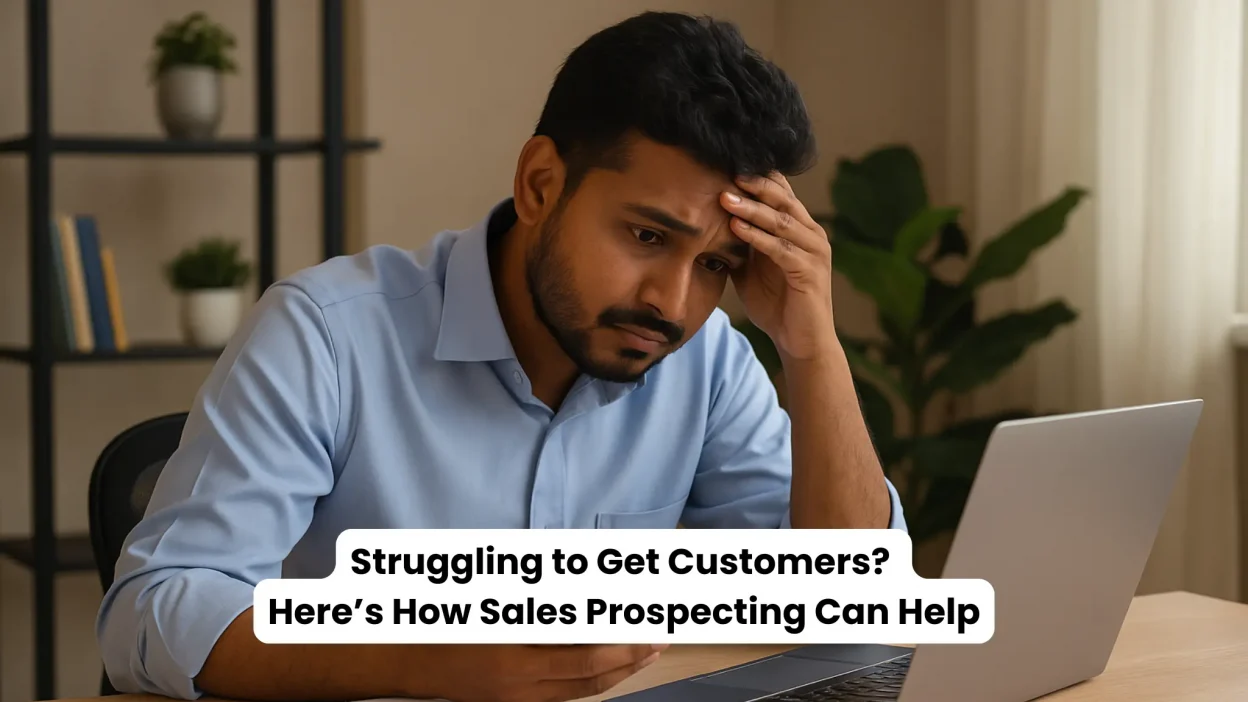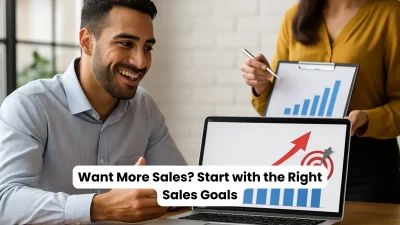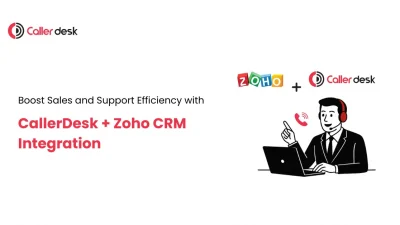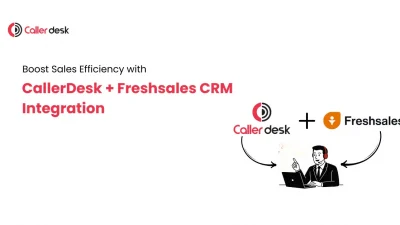You have a great product.
You’re ready to sell.
But there’s one big problem…
Who do you sell to?
That’s where most businesses get stuck.
You can’t just wait and hope someone shows interest.
You need a smart way to find the right people-those who actually want what you’re offering.
And that’s where sales prospecting comes in.
It’s not just cold calls or random emails. It’s a proper system to fill your pipeline with real buyers.
In this blog, we’ll show you exactly how to use sales prospecting to find high-quality customers, build better relationships, and close more deals-step by step.
Whether you’re new to sales or looking to grow faster, this guide will make it easy for you to understand and apply.
Let’s get started.
What Is Sales Prospecting?
Sales prospecting means searching for people who might want to buy your product or service-and then talking to them to see if they’re really interested.
Let’s make it super simple:
Imagine you’re selling lemonade.
You could stand anywhere and hope someone walks by to buy it…
OR
You could go near a playground where kids are thirsty after playing. That’s a better spot, right?
That smart thinking is called prospecting in sales.
It’s not about selling to everyone-it’s about finding the right people who actually need what you offer.
Sales Prospecting vs. Lead Generation: What’s the Real Difference?
Think of it like a shop.
- Lead Generation is like putting up a big, colorful sign outside your shop that says, “We’re open! Come check us out!”
You’re waiting for people to walk in on their own. This is usually done by the marketing team using things like ads, blogs, or social media. - Sales Prospecting is like walking around the market, talking to people one by one, and inviting them to visit your shop.
You’re going out and starting the conversation. This is usually done by the sales team using calls, emails, or LinkedIn messages.
Let’s look at two simple examples:
If someone reads your blog and signs up for your newsletter-that’s lead generation.
You didn’t talk to them directly, but they showed interest.
If you search for someone on LinkedIn and send them a message or give them a call-that’s sales prospecting.
When Does Sales Prospecting Happen?
Sales prospecting is the first step in the sales journey.
It happens before you show your product, give a price, or ask someone to buy.
Think of it like this:
If sales is like building a house, prospecting is laying the foundation.
Without it, the house (your sale) can’t stand.
Here’s what happens in order:
- First, you find the right people to talk to. (That’s prospecting.)
- Then, you contact them and learn about their needs.
- Next, you show how your product or service can help.
- Finally, you try to close the deal.
👉 So if you skip prospecting, it’s like showing up to a cricket match without a team. You won’t win because there’s no one to play with.
Prospecting makes sure you always have new people to talk to and sell to.
Why Is Sales Prospecting So Important?
If you don’t know who to sell to, how will you ever make a sale?
That’s where sales prospecting helps. It’s like choosing the right cricket bat before going to play-if you pick smartly, you’ll perform better.
Here’s why it really matters:
1. It Helps You Find Real Customers (Not Just Random People)
Instead of wasting time calling or emailing anyone, you focus only on people who actually need what you’re selling. That means less rejection and more chances of a yes.
2. It Builds Your Sales Pipeline
Think of your sales pipeline like a water bottle. If you don’t keep filling it with fresh water (new prospects), it will soon be empty. Prospecting keeps your pipeline full so you never run out of sales opportunities.
3. It Saves Time and Increases Sales
When you talk to the right people, you close deals faster. You don’t need to explain everything to someone who’s not even interested. That saves time and gives better results.
Types of Sales Prospecting
There are two main types of sales prospecting. One is when you reach out to potential customers. The other is when they show interest in you first. Let’s look at both in simple terms.
1. Outbound Prospecting – You reach out first
This means you take the first step and contact people who haven’t shown interest yet.
Cold Calling
Calling someone who didn’t expect your call.
Example: You call a store owner to talk about your billing software.
Cold Emailing
Sending an email to someone you’ve never talked to.
Example: You email an HR manager about your hiring tool.
LinkedIn Messaging
Messaging people on LinkedIn who match your ideal customer.
Example: You message an IT manager to share a useful guide.
Referrals
Asking your current customers to introduce you to others.
Example: A happy client tells a friend to check out your service.
Outbound is good when you know who your target customers are and want fast results.
2. Inbound Prospecting – They show interest first
This happens when someone interacts with your brand first, and you follow up.
Warm Emailing
Emailing someone who signed up or downloaded something.
Example: A person signs up for a free trial, and you offer help.
Social Selling
Connecting with people who liked, shared, or commented on your social posts.
Example: You message someone who commented on your post.
Website Tracking
Using tools to see who visited your website, then contacting them.
Example: You email someone who viewed your pricing page.
Inbound is helpful because these people already know you and are easier to convert.
Which One Is Better?
Both are useful.
- Outbound helps you reach new people fast.
- Inbound helps you build trust with those already interested.
The best sales teams use both methods to grow steadily and close more deals.
5 Simple Steps to Start Sales Prospecting
Want to turn strangers into customers? Follow these 5 steps.
We’ve broken them down in a way that even your younger cousin could understand.
Step 1: Find People Who Might Want to Buy (New Leads)
Think of leads as people who might need your product-they just don’t know you yet.
You can find these people in places like:
- LinkedIn – Great for finding professionals and business owners
- Email lists – People who signed up for newsletters or free downloads
- CRM tools – These store contact details from your website or campaigns
- Events or online communities – Like webinars, business meetups, or Facebook groups
Your goal: Collect names, emails, and any useful info that can help you reach out later.
Step 2: Learn About Them (Basic Research)
Before talking to someone, it’s smart to know a little about them-just like checking someone’s profile before messaging them.
Here’s what to look for:
- What company they work for
- What their job is (Are they a decision-maker or just an employee?)
- What their company does
- What problems they might have that you can solve
Tools like LinkedIn, company websites, and Google can help you find this info quickly.
Step 3: Make Sure They’re a Good Fit (Qualify the Lead)
Now ask yourself:
- Can they afford what I’m selling?
- Do they actually need my product or service?
- Are they the person who can say “yes” and make a buying decision?
If the answer is yes, you’ve found a good lead. If not, don’t waste your time.
Step 4: Start the Conversation (Reach Out)
Here’s where things get exciting.
Send a short, friendly message by:
- Email
- Phone call
- LinkedIn message
Don’t make it a boring sales pitch. Instead:
- Say something personal (like mentioning their job or recent company news)
- Talk about their problem
- Show how your product can make life easier
- End with a simple question like: “Would you like to chat this week?”
Example:
“Hi Riya, I saw you handle customer service at GrowFast. Many teams like yours use our tool to respond faster. Want to see how it could help you too?”
Step 5: Don’t Give Up-Follow Up
Most people don’t reply to the first message-and that’s okay.
Here’s the truth:
Most sales happen after 3 to 5 follow-ups.
So keep trying, but don’t be pushy. Be helpful.
You can say things like:
- Just checking if you saw my last message
- Here’s a short case study you might find useful
- I’d still love to connect when you’re ready
Set reminders to follow up after 2 to 3 days, then again after a week. Stay polite, stay patient.
Top Sales Prospecting Tools
Want to reach more prospects and save time? These tools can help you work smarter.
1. LinkedIn Sales Navigator
Helps you find key decision-makers in companies, like managers or business owners. Perfect for targeting the right people.
2. CRM Tools (like HubSpot, Zoho)
Store and manage contact details, track conversations, and schedule follow-ups. Keeps your sales organized and on track.
3. Cold Email Tools
Send personalized emails to many leads at once. Track who opens and replies. Ideal for bulk outreach with a human touch.
4. AI Writing Tools (like ChatGPT)
Create better emails, subject lines, and messages quickly. Useful when you’re unsure what to write.
5. Auto Dialers & Call Trackers (like CallerDesk)
Automate calls, record conversations, and set reminders. Great for calling many prospects without missing follow-ups.
Who Does Sales Prospecting in a Company?
Sales prospecting can be done by different people, depending on the size of the company.
1. Founders
In small startups, the founder does almost everything-including finding leads, contacting them, and closing the sale.
2. Sales Development Representatives (SDRs)
SDRs look for new people who haven’t heard about the company. They send emails, make calls, or message people to start a conversation.
3. Business Development Representatives (BDRs)
BDRs talk to people who have already shown interest in the company, like visiting the website or filling out a form. They check if these people are a good fit.
4. Account Executives (AEs)
AEs talk to the people who are already interested and try to close the deal by giving demos, handling questions, and finalizing the sale.
How They Work Together
- SDRs find new leads
- BDRs check and qualify them
- AEs close the deal
- Founders do all of this in small companies
Conclusion
If you’re struggling to get customers, the problem may not be your product-it’s that you’re not talking to the right people.
That’s where sales prospecting helps. It gives you a clear process to find potential buyers, understand their needs, and start meaningful conversations.
It’s not just about cold calls or random emails. It’s about reaching out with purpose, helping people solve problems, and filling your sales pipeline with real opportunities.
Whether you’re just starting out or want to grow faster, using the right prospecting methods-outbound, inbound, or both-can make a big difference.
Start small, stay consistent, use the right tools, and never forget to follow up.
The more you prospect, the more you sell. It’s that simple.





